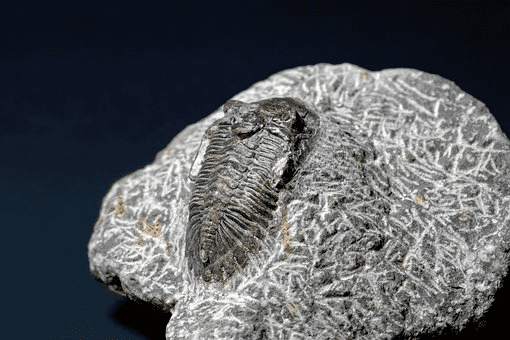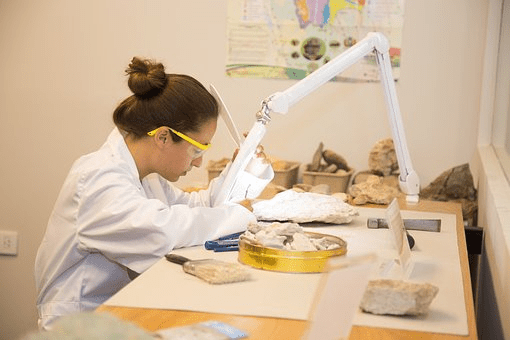The word fossil refers to the remains or traces of ancient plants and animals that have been preserved in rock. When you think about fossils, it’s easy to imagine a dinosaur skeleton being unearthed from beneath a mountain range. In reality, scientists study many different types of fossils for various reasons. This article will explore different types of fossils and their importance.

What Are Fossils?
Fossils are the preserved remains or traces of ancient organisms. There is a wide range of fossil types, including plant and animal impressions, body parts like teeth and bones, castings of the inside cavities left behind when an organism decayed after death (called molds), trace fossils that show evidence of activity such as footprints or burrows made by worms in muds before they turned to stone (called ichnofossils), minerals deposited within cracks in rocks called cement stones, casts made from organic material dissolved out from rock that hardens around it into another substance called replacement, and more.
Different Types of Fossils
- Trilobites
The trilobite was a prehistoric creature that lived in the ocean and is one of the most well-known fossils. Though they are extinct, they provide a wealth of information about the marine life of their time. Trilobites were invertebrates with tough exoskeletons, and there are more than 20,000 different species identified to date. They first appeared in the fossil record about 530 million years ago and went extinct around 250 million years ago. Thanks to their hard shells, trilobites have left behind an impressive fossil record that helps learn about their lives and how they evolved over millions of years. While some were marine organisms that lived in oceans, others only lived on land or near shorelines where they could burrow into the sandy seabed. Some species even had shells lined with spines, which helped protect them while digging through sediment looking for food.
They belong to the phylum Arthropoda, a group of animals, including insects, spiders, and crustaceans. Trilobites are easily identified by their distinctive three-lobed body shape. They were usually less than a foot in length, but some species grew up to two feet long. It is one of the most common fossils found in North America and Europe.
- Graptolites
It is usually found in a maroon color and is often mistaken for a type of rock. This can be dangerous because it will not dissolve in water like most rocks, which means that if you were to take a drink from the stream or river where graptolite fossils are found, you could get sick.
Graptolites are marine creatures that belong to the phylum Hemichordata, also known as “half-chords.” These animals lived during the Cambrian period (544 – 252 million years ago) and are relatives of modern-day acorn worms. Graptolites typically grew less than an inch long, but some species reached up to two inches in length.
The word graptolite comes from the Greek words gráphein, meaning “to write,” and lithos, meaning “stone.” This is because graptolites were once thought to be the fossilized remains of writing instruments used by ancient civilizations.
The graptolite is a fossil found worldwide that was once an active member of aquatic ecosystems during the Paleozoic era. This ancient marine creature had a tubular body with spine-like branch structures running down its length. They were one of the most successful and long-lived groups of animals in Earth’s history, living for over 270 million years.
Graptolites are unique because they are one of the few types of fossils that can be used to date rocks and formations. Scientists can get a good idea of when those rocks were formed by studying the distribution and type of graptolites found in different rock strata.
- Eurypterid (Sea-scorpion) claw
Sea-scorpions are ancient carnivorous creatures that belonged to the arthropod group known as chelicerates. They were related to modern spiders, mites, and horseshoe crabs.
Eurypterid comes from two Greek words: eurys, meaning “broad,” and pteron, which means “wing.” It refers to their large paddle-like limbs (which look like wings), which they use for swimming through water or air.
Eurypterids were a group of predatory sea scorpions. These creatures ranged in size from less than an inch to over seven feet long, making them some of the largest arthropods ever to live on Earth.
The most common type of eurypterid fossil is a claw, used to identify these animals. Eurypterid claws are often found in shale deposits and help date rocks and formations. They existed from the mid-Ordovician period through the early Devonian period (about 470 million years ago to 400 million years ago). During this time, eurypterids were one of the most successful groups of aquatic predators.
Eurypterid claws can be identified by their distinctive three-pronged shape and large pincer, often more than an inch long. These animals were predators that hunted other invertebrates, such as worms and crustaceans.
Important of Fossils

Fossils are an important part of the fossil record, and their discovery has helped understand the history of life on Earth in greater detail. By studying fossils, you can learn more about how ecosystems have changed over time and how different organisms have evolved to survive in changing environments. This information can help you to better understand the natural world around you. The disappearance or presence of various species provides clues about the ancient environment, including water temperature and oxygen levels.
They are used for many purposes, including scientific research and teaching about Earth’s history. Museums often use fossils as educational tools because they are visually appealing and help people connect with the planet’s past. Many ancient species of plants and animals have become extinct over time, so finding their remains helps scientists learn more about these organisms that no longer exist today.
They are essential to science because they help date rocks and formations, understand the history of life on Earth, and track changes in climate over time. By studying fossils, you can learn more about how ecosystems have changed over time and how different organisms have evolved to survive in changing environments. This information can help you to understand the natural world better.
In summary, fossils are the remains of ancient creatures preserved in rocks over time. The study of fossils has helped scientists learn a great deal about the evolution and ecology of these ancient creatures. The above fossils are an essential part of the fossil record, and their discovery has helped understand the history of life on Earth in greater detail.

